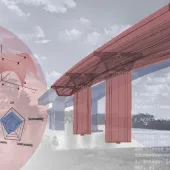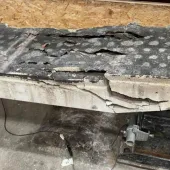AI tool will detect issues with RAAC
Loughborough University researchers have developed a cutting-edge AI tool aimed at revolutionizing the survey and maintenance of Reinforced Autoclaved Aerated Concrete (RAAC) in buildings across the UK.
The tool, considered the first of its kind, uses software created by academics from the University’s School of Architecture, Building, and Civil Engineering.
The digital tool employs thousands of images to quickly detect and analyse ongoing deterioration within RAAC structures. It effectively highlights the location and projected lifespan of cracks within the concrete, significantly reducing the time and resources required for maintenance.
The inspiration for the project arose from the identification of RAAC faults within NHS buildings. Professor Chris Gorse, professor of Construction Engineering and Management, explained that the lack of a unified approach to data collection prompted the development of a more systematic and efficient solution. He stated, "We realized that we needed to start collecting data that was less based on manual surveying processes and more to do with what could be captured as real and accurate data."
The tool aims to streamline the inspection process currently undertaken nationwide. Professor Gorse emphasized, "This tool provides a far superior process to what’s currently being used - reducing the time and number of people involved drastically, allowing us to better focus those resources."
Dr. Karen Blay, senior lecturer in Digital Construction and Quantity Surveying, highlighted the importance of teaching the AI to distinguish between various types of cracks, from hairline cracks to spider webs.
"This is a code that can be run from any laptop and used by anyone," adding that the tool, currently 95% accurate, complements manual checks to enhance data objectivity.
While the AI tool is designed for ease of use, Dr. Blay stressed its role as a supplement to manual inspections, not a replacement. She noted, "It’s important we continue to gather more information before assessing the situation in the future. It’s possible that in years to come we could well have a situation where we've got something much more automated surveying RAAC and reducing the time required for inspection even further."
Dr. Blay also emphasized the tool's potential long-term impact on Britain's aging building stock: "Without a smart asset management system, you really can't manage your building stock and apply something like the Building Safety Act properly." She also highlighted the importance of creating a transferable knowledge pool through a digital interface, with the AI tool serving as the bedrock of such a system.
The experienced team at Loughborough University, led by Professor Gorse and Dr. Blay, has established itself as a leader in RAAC research, benefiting from state-of-the-art laboratories and modeling capabilities available at the university.







